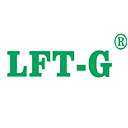(1) 모노필라멘트
원래는 단일구멍 방사구금에 의해 방사된 연속적인 단섬유를 말하지만 실제 응용에서는 3~6구멍 방사구금에 의해 방사된 3~6개의 단섬유로 구성된 소수의 구멍을 가진 필라멘트를 포함하는 경우가 많다. 굵은 합성섬유 모노필라멘트(직경 0.08~2mm)를 강모라고 하며 로프, 브러시, 일일 메쉬 백, 어망 또는 산업용 필터 천을 만드는 데 사용됩니다. 더 미세한 폴리아미드 모노필라멘트는 투명한 여성용 양말이나 기타 고급 니트웨어를 만드는 데 사용됩니다.
(2) 복합 실크
수십개의 단섬유로 이루어진 필라멘트. 화학섬유 중 복합섬유는 일반적으로 8~100개의 단섬유로 구성된다. 대부분의 직물은 복합 실크로 만들어집니다. 이는 여러 개의 단일 섬유로 구성된 복합 실크가 동일한 직경의 단일 실크보다 유연성이 더 높기 때문입니다.
(3) 커튼와이어
타이어코드 원단 제조에 사용되는 100~수백개 이상의 단섬유로 구성된 실크스트립으로 흔히 코드와이어(cord wire)로 알려져 있다.
화학섬유로 만든 제품을 수 cm에서 수십 cm 길이로 절단하는데, 이 길이의 섬유를 단섬유라 한다. 절단 길이에 따라 스테이플 섬유는 면 스테이플 섬유, 양모 스테이플 섬유, 중간 길이 스테이플 섬유로 나눌 수 있다.
(1) 면 스테이플 섬유
길이는 25~38mm이고 섬유질은 가늘고(선밀도는 1.3~1.7dtex) 면섬유와 유사하며 주로 면계 폴리에스터 스테이플 파이버, 면섬유 혼방 등 면섬유와의 혼방에 사용되며, 생성된 직물 "폴리면" 원단이라고 합니다.
(2) 헤어 스테이플 섬유
길이 70~150mm, 양모와 유사한 거친 섬유(선밀도 3.3~7.7dtex)로 주로 양모계 폴리에스터 스테이플 파이버, 양모 혼방 등 양모와의 혼방에 사용되며, 이렇게 만들어진 직물을 "양모"라 한다. 폴리에스터" 원단.
(3) 중간길이 섬유
길이는 51~76mm이고, 섬유굵기는 면형과 울형의 중간형(선밀도는 2.2~3.3dtex)으로 중장섬유 직물의 제직에 주로 사용된다.
스테이플 섬유는 천연 섬유 및 기타 화학 섬유와 혼합될 수 있으므로 혼합 직물은 우수한 종합 특성을 갖습니다. 또한, 단섬유는 순수 방적도 가능하다. 전 세계적으로 화학섬유 생산에 있어서 스테이플 섬유의 생산량은 필라멘트 섬유의 생산량보다 높습니다. 섬유의 특성에 따라 일부 품종(예: 나일론)은 필라멘트를 생산합니다. 일부 품종(예: 아크릴 섬유)은 주로 단섬유를 생산합니다. 폴리에스테르와 같은 일부 품종은 비슷한 비율을 가지고 있습니다.
낮은 강도, 큰 파단 신율, 강한 열 수축, 좋은 염색 및 쉬운 알칼리 환원 가공의 거친 세부 실크 거친 부분은 이러한 특성을 최대한 활용하여 독특한 섬유 특성을 개발할 수 있습니다. 거친 디테일 실크의 물리적 특성은 거친 디테일의 직경 비율 및 기타 요소와 관련이 있습니다. 일반적인 거친 세부 필라멘트는 파단 신장률과 끓는 물 수축률이 높고 파단 강도와 수율이 낮습니다. 강한 수축 특성으로 인해 거친 세부 섬유가 다른 섬유와 혼합되어 이종 수축 혼합 섬유를 형성할 수 있습니다. 또한, 거친 세부 실크의 거친 부분은 변형되기 쉽기 때문에 직조, 염색 및 마무리 과정에서 강도가 낮은 문제에 주의해야 합니다. 초기의 거친 디테일의 실크는 둥근 실크입니다. 거친 디테일 실크의 생산 기술이 발전함에 따라 특수 모양의 거친 디테일 실크, 혼합 섬유 거친 디테일 실크, 미세 다공성 거친 디테일 실크 및 미세한 데니어 거친 디테일 실크 등과 같은 특별한 거친 디테일 실크가 연속적으로 등장했습니다. .특별한 촉감과 스타일을 가지고 있거나 특별한 흡수성을 가지고 있어 고급 원단 개발에 주로 사용됩니다.
일본에서 유래된 차등화섬 유지 외래어는 일반적으로 섬유재료의 물리적 변형이나 화학적 변형을 기반으로 한 원래의 화섬을 말하며 외관이나 내부 품질이 일반 화섬과 명백히 다릅니다. 차등섬유는 화학섬유의 성능과 스타일을 향상시킬 뿐만 아니라 높은 흡수율, 전기 전도성, 높은 수축률, 염색성 등 화학섬유에 새로운 기능과 특성을 부여합니다. 차등섬유는 시뮬레이션 효과, 편안함, 보호성을 향상시키기 위해 주로 사용되기 때문에 주로 양모, 린넨, 실크와 같은 의류용 섬유 개발에 사용되며 일부는 장식용 섬유 및 산업용 섬유 개발에도 사용됩니다.
섬유의 단면에 섞이지 않는 고분자가 2종 이상 있다. 이 화학섬유를 복합섬유 또는 이성분 섬유라고 합니다. 섬유에 포함된 2가지 이상의 성분이 서로 보완적이기 때문에 일반적으로 복합섬유의 성능은 기존 합성섬유에 비해 우수하며 용도도 다양하다.
복합섬유에는 다양한 종류가 있으며 형태에 따라 이중층 유형과 다층 유형의 두 가지 범주로 나눌 수 있습니다. 복층형에는 평행형과 스킨코어형이 있고, 다층형에는 평행다층형, 방사형, 다심형, 나뭇결형, 매립형, 해도형, 분할형이 있다.
단섬유의 굵기가 원단의 성능에 큰 영향을 미치기 때문에 화학섬유도 단섬유의 굵기(선형밀도)에 따라 분류할 수 있으며, 일반적으로 일반섬유, 미세섬유, 극세섬유로 나누어진다 매우 미세한 섬유질입니다.
1980년대 후반 일본에서 등장한 새로운 합성 소재는 복숭아 가죽, 초미립자 손잡이 등 참신하고 독특한 초자연적 스타일과 질감으로 전 세계적으로 인기를 끌었습니다. 중합, 방적, 직조, 염색 및 마무리, 재봉 및 기타 단계의 새로운 합성 섬유는 새로운 변형 및 복합 기술을 채택하며 일종의 천연 섬유이며 합성 섬유는 이전의 새로운 섬유 재료와 비교할 수 없습니다. 상품 형태에 따라 신형 복합섬유는 주로 슈퍼 플러피형, 슈퍼 드레이프형, 슈퍼 파인형을 포함한다. 촉감에 따라 실크촉감, 피치스킨촉감, 초미립분말촉감, 뉴울촉감으로 구분된다.
